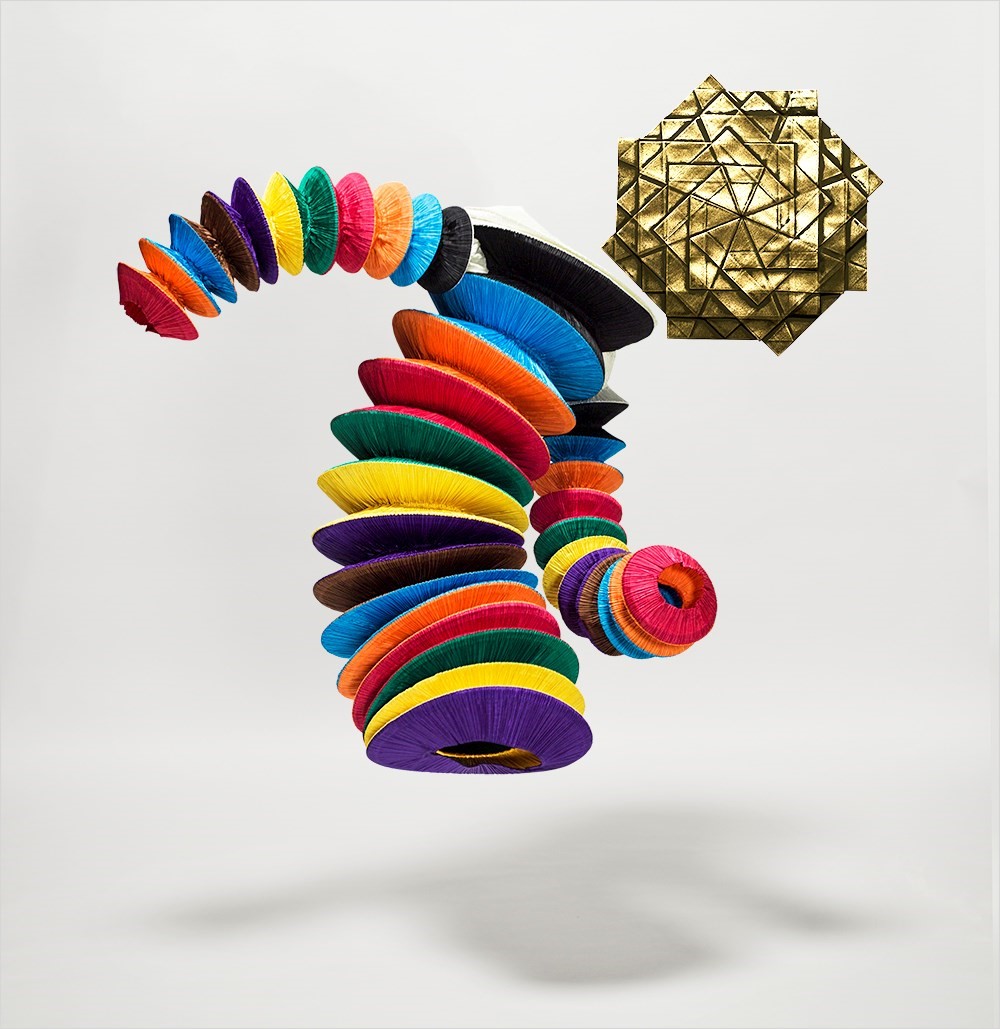Issey Miyake does not consider himself to be a fashion designer. Instead, informed and influenced by a multitude of disciplines, including architecture, the cross-pollination of cultures, modern art and environmental issues, he attests that his creative output is devoted to “making things, making a product that people enjoy and can wear freely.” It’s a relatively simple mantra for a man whose technically ingenious, experimental and soulful oeuvre – spanning 45 years – consistently breaks new ground.
Rather than subscribing to the often fickle and fleeting nature of seasonal trends, Miyake’s clothing habitually explores the relationship between a piece of cloth and the body, and the space that’s created as a result, utilising both traditional and avant-garde methods of craftsmanship in the process. Perhaps most importantly, his garments often raise questions about pressing critical issues – from ethical awareness to hedonism and racial diversity. Take the Spring/Summer 1971 ‘Tattoo’ flesh-tone jumpsuit [image displayed below], texturized with a large printed motif, which Miyake designed after establishing his eponymous label in Tokyo [Miyake Design Studio, or MDS] in 1970 – a physical expression of freedom that placed importance on the wearer, rather than the clothing itself by presenting a liberating ‘second skin’.
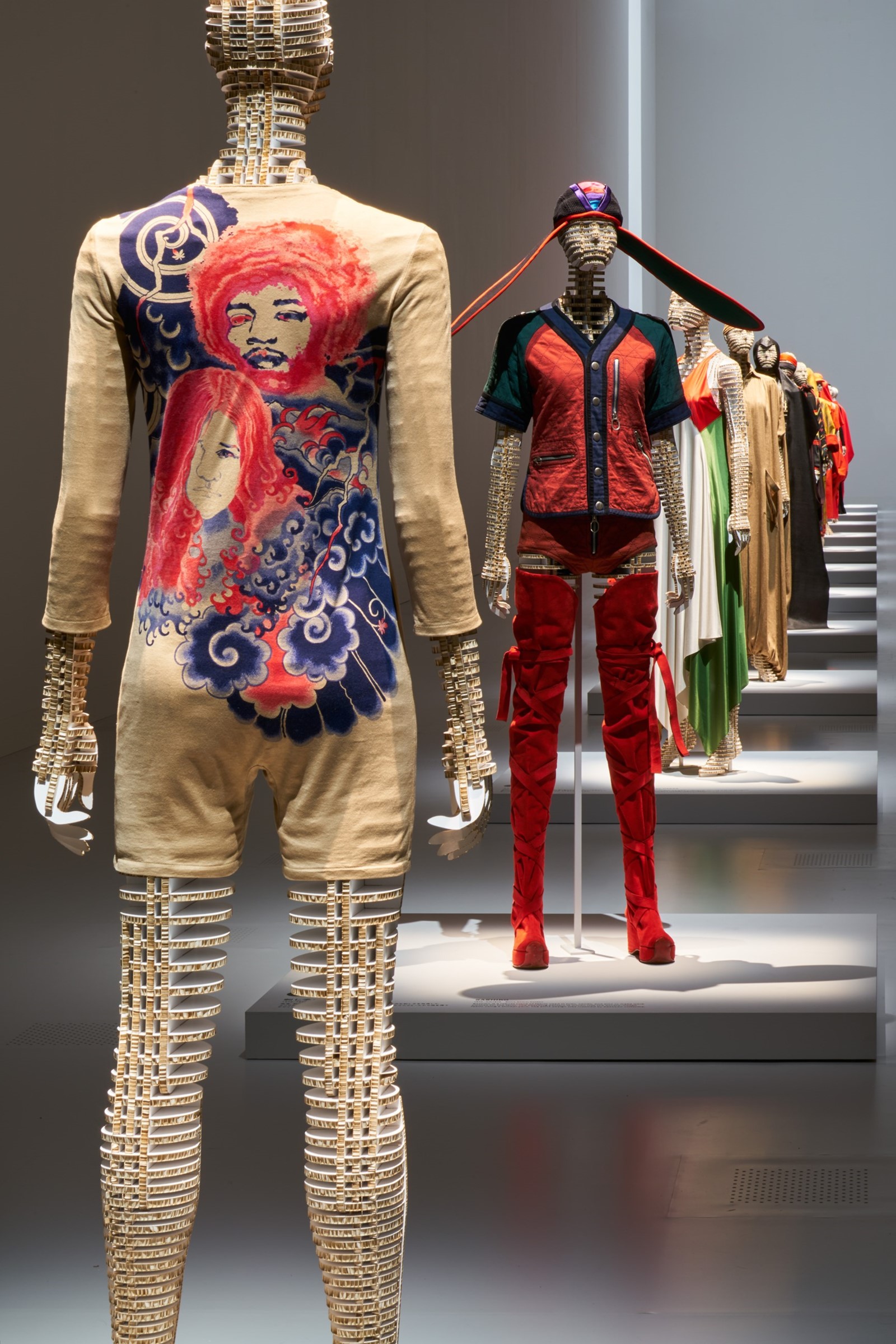
Now, Miyake enthusiasts are able to both celebrate and reconnect with his sartorial opus in the most extensive and comprehensive showcase of his designs to date in MIYAKE ISSEY EXHIBITION: The Work of Miyake Issey. Housed at the spectacular, Kisho Kurokawa-designed National Art Centre Tokyo, the exhibit (ten years in the making) is thematically divided into three parts, which mark different chapters of Miyake’s illustrious career from 1970 until the present day. Having been fortunate enough to visit the exhilarating show, AnOther unravels its prevailing themes.
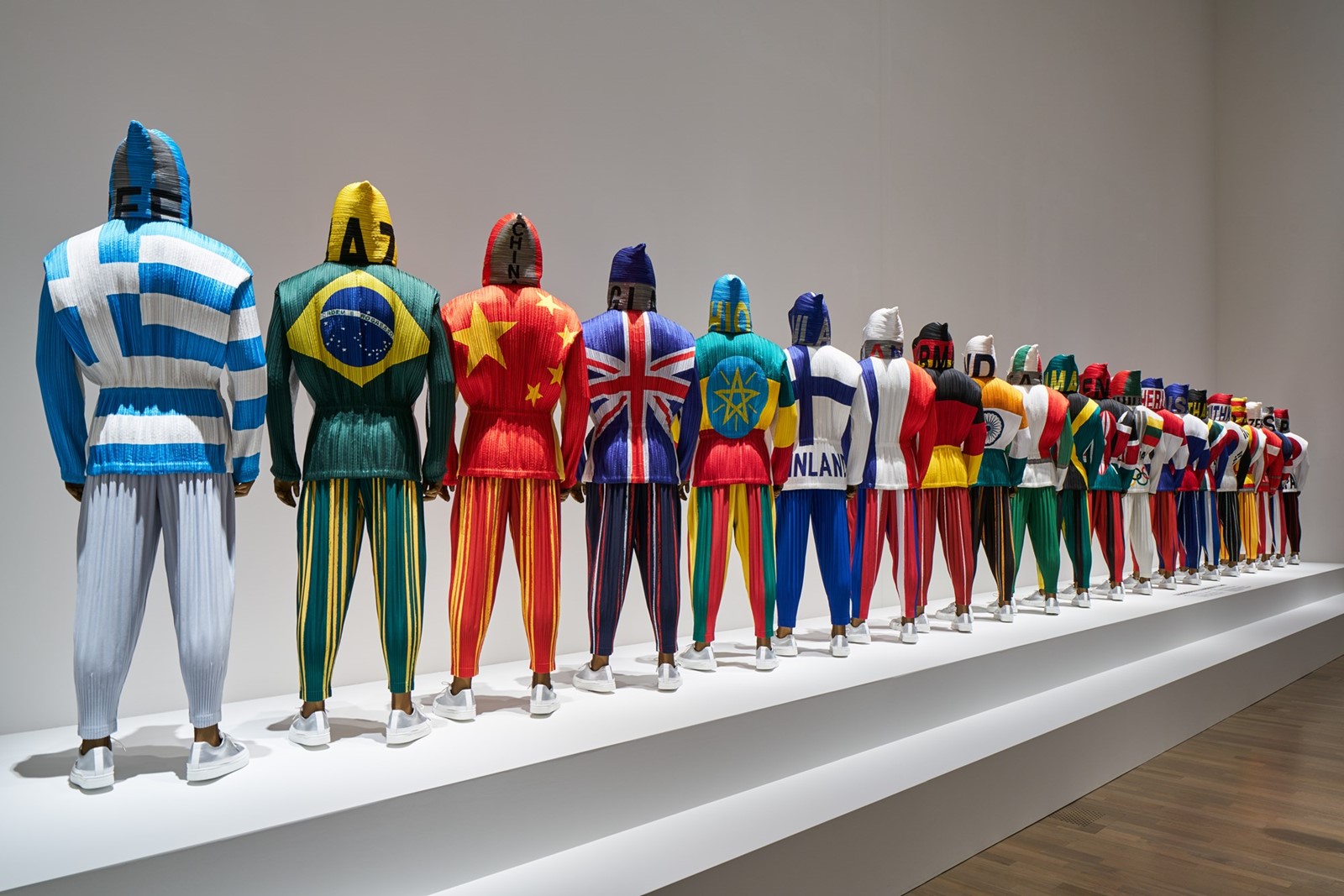
The Extraordinary Everyday
“Mr Miyake works in the Japanese tradition of mono–zukuri [making things] while creating clothing from out of his own inspiration,” explains Dr. Tamotsu Aoki, Director General of The National Art Centre Tokyo. “Whenever I come across his work, I have surprise and good feeling. Why? Because at the base of his work is the philosophy of ‘everyday life’.” Indeed, this drive to offer wearable solutions to modern life – free-form clothing that places emphasis on physicality, constructed from very few seams – forms an evolving narrative throughout the exhibit, and remains at the heart of Miyake’s humanist design code. As he recalls of his thinking after witnessing the violent May Revolution protests in Paris during the late 1960s, “I was determined, I wanted to make clothes not for a limited group of rich people, but to make things like jeans and T-shirts, clothes that everybody knows and can easily wash and wear.”
This motivation is best exemplified in his revolutionary creation of PLEATS PLEASE ISSEY MIYAKE. Unveiled in 1993, the line, crafted entirely from thermally treated pleated polyester cloth, negates the use of threads, scissors or needles and is cut by a pioneering ‘heat machine’ – one of which graces the largest room of the exhibit, offering live demonstrations by Miyake-clad artisans, to the delight of visitors. “Pleating is one of humanity’s most ancient methods of making clothing that adapts to the body, and Miyake achieved a modern metamorphosis of pleats by making them both aesthetically valuable as well as being comfortable and practical (not to mention easy to care for),” says Yayoi Motohasi, curator of Toyko's National Art Centre. This signature use of pleating and the abstraction of simple silhouettes has become a pivotal expression in Miyake's design vernacular, and in turn, our own.
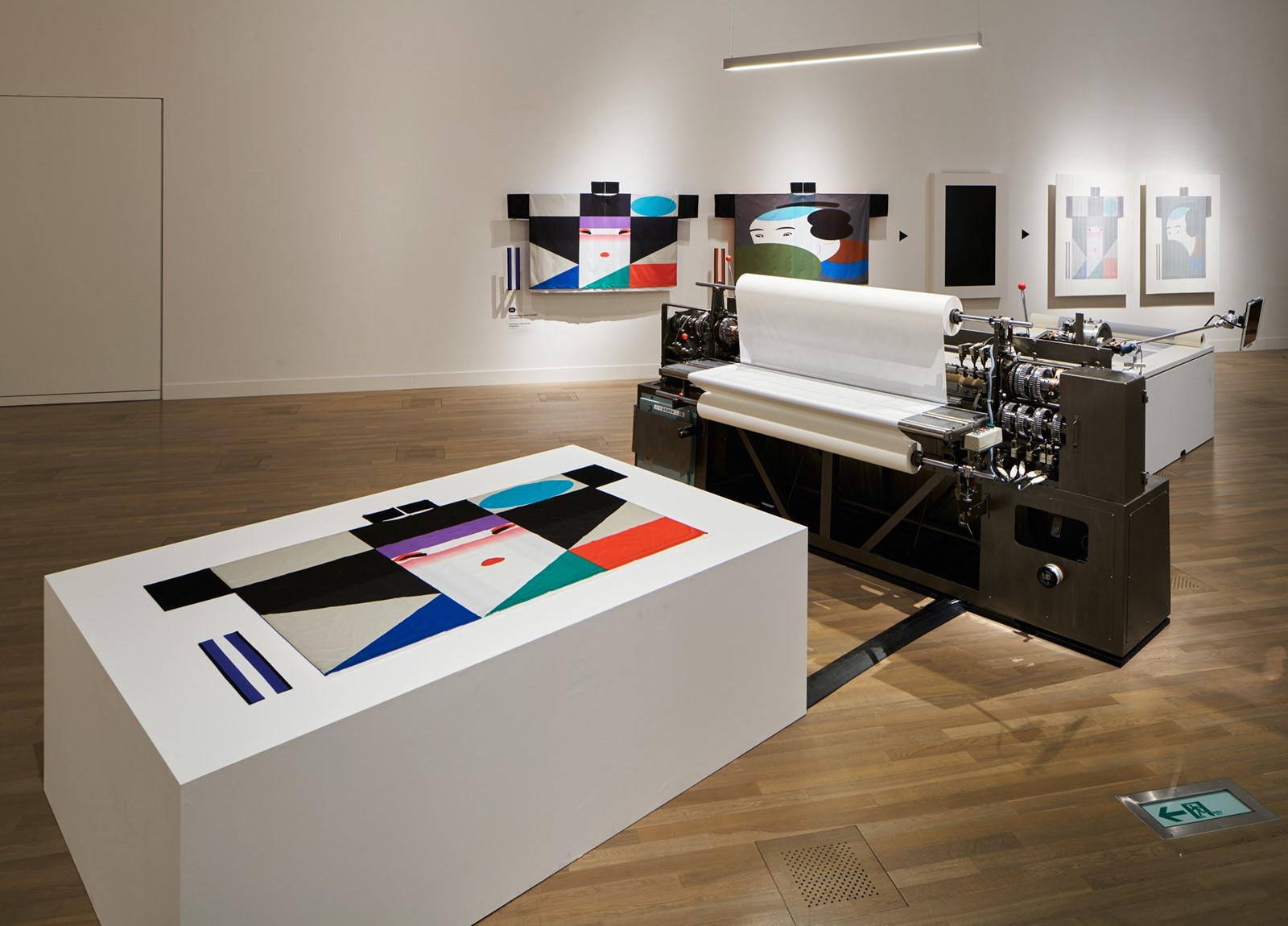
Design As Discovery
Experimentation is a vital tenet of Miyake’s aesthetic – achieved through a stimulating fusion of ancient techniques and pioneering technology. In the Spring/Summer 1981 creation 'Rattan Body', for example, Miyake called upon Japanese artisan Shochikudo Kosuge to develop an air-soft, yet surprisingly hardwearing fabrication, meticulously crafted from rattan and bamboo; the process of which is captured on film and shown at the end of the exhibition. Not only did 'Rattan Body' present a harmonious dialogue between Eastern artisan tradition and contemporary Western fashion, but it was also the first ever garment to land the cover of the contemporary art publication, Artforum.
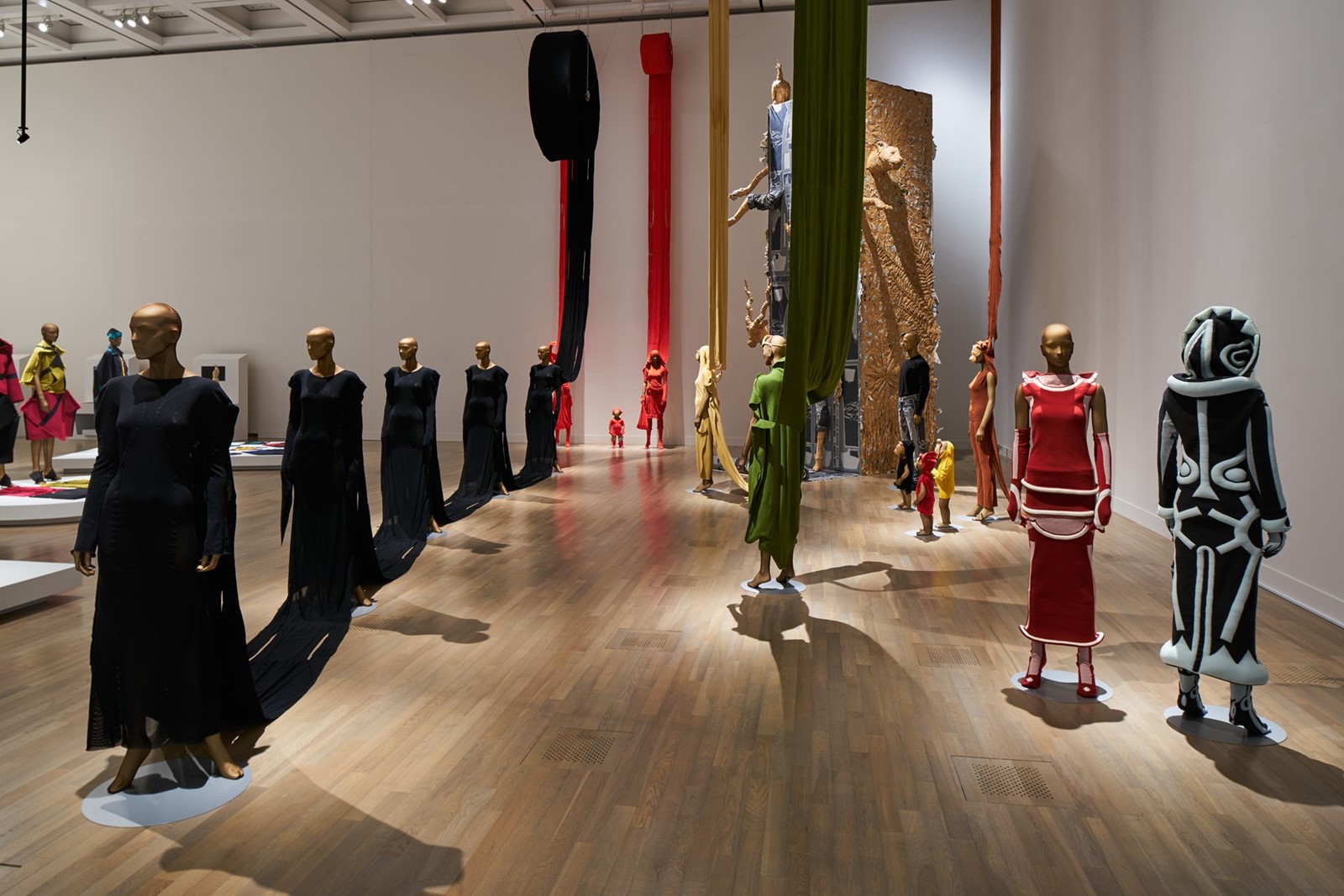
Similarly progressive is a standout installation of looks from Miyake’s A-POC (A Piece Of Cloth) methodology, in which colossal rolls of woven fabric are hung (as though unravelling) from the ceiling to the floor of the exhibition space to demonstrate the digital fashioning of a fully-finished garment from a single, continuous knitted tube via computer programming. “It’s an operation that fundamentally inverted conventional ways of thinking about the manufacture of clothing, and has continued to develop further possibilities,” notes Motohashi. In addition to being a technical feat, this process virtually eliminates the wastage of fabric and aptly demonstrates Miyake’s own concerns with eco-awareness and sustainability.
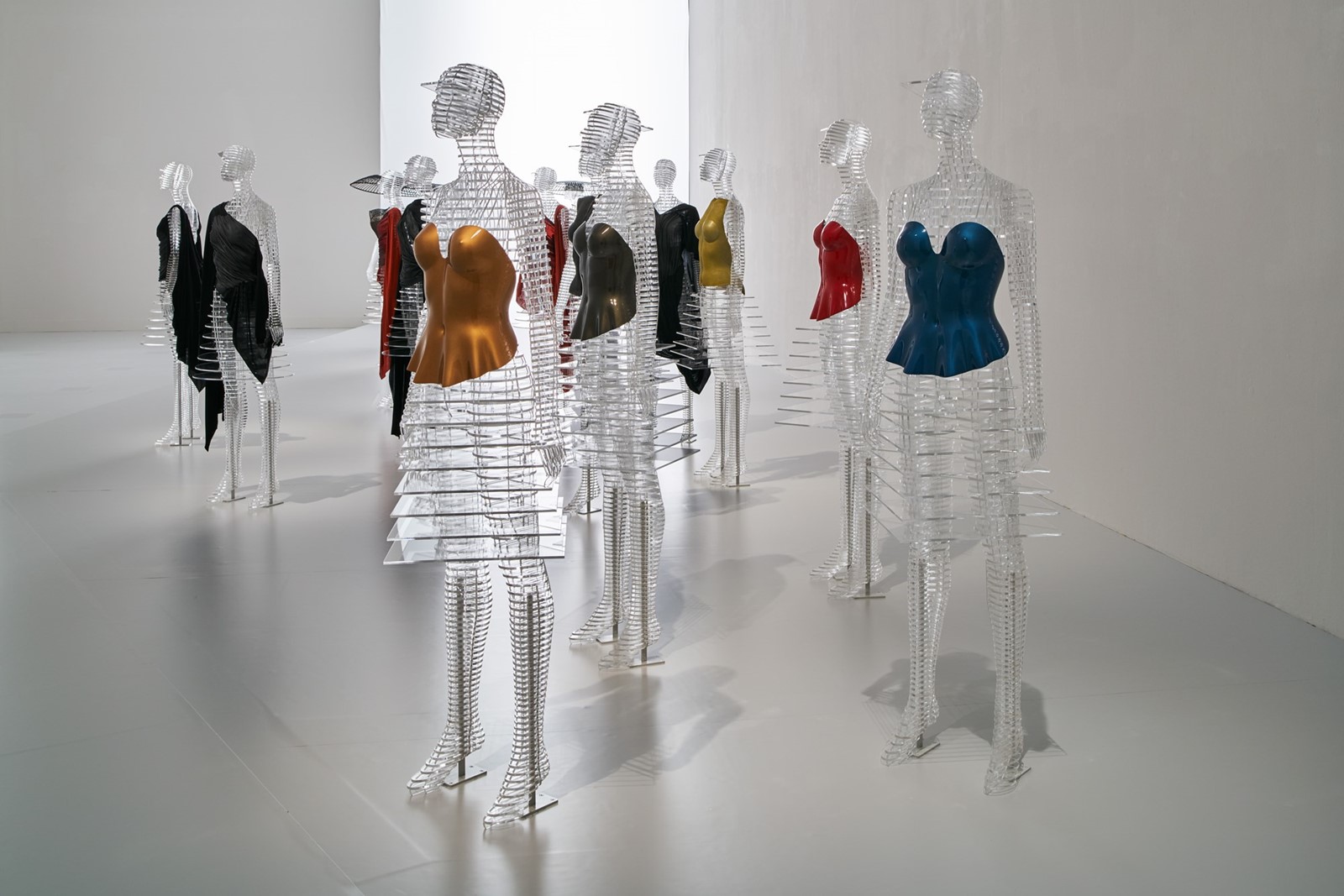
Collaborative Harmony
Creative alliances with various artists have proved invaluable to Miyake, resulting in some of the most exciting works of his career. The bold Autumn/Winter 1976 'Paradise' shirt, which sets the exhibition off to a vibrant start, features specially designed artwork by the famed Tadanori Yokoo. Meanwhile the aforementioned pleating machine, which plays a starring role in the show, brings modern poster art by late graphic designer Ikko Tanaka to life in the form of kimono-style coats. Even the mannequins on display, created from gridded cardboard and clear fibreglass, with several textured overlays, were created especially in collaboration with Tokujin Yoshioka.
Yet arguably the most popular creative dialogue presented during the exhibit is a large video installation which plays out iconic fashion shoots by Miyake and the late, great Irving Penn. Miyake first met Penn in 1983, after the influential photographer was assigned to capture several of his mainline looks as part of a fashion story for American Vogue. Penn's unique perspective enabled Miyake to see his own designs in an entirely new light, and as a result the designer tapped him to lens his ready-to-wear collections for the next 13 years. As Miyake once explained of their ongoing union: “I was looking for one person who could look at my clothing, hear my voice and answer me back through his own creation. Through his eyes, Penn-san reinterprets the clothes, gives them new breath, and presents them to me from a new vantage point. Penn shows me what I do.”
To paraphrase the Pompidou’s esteemed Didier Grumbach, who contributes a personal essay about Miyake for the exhibition’s insightful accompanying tome, Miyake Issey, 2016: “Some fashion designers are great artists.”

MIYAKE ISSEY EXHIBITION: The Work of Issey Miyake is on view at The National Art Centre Tokyo until June 13, 2016.
